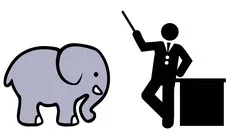
Cluster Analysis- Theory & workout using SAS and R 
Discover the power of cluster analysis with this comprehensive course on theory and practical application. Cluster analysis is a popular technique used in data mining for marketing purposes, allowing you to find natural groups within data. With video presentations, PDFs, Excel workbooks, and SAS codes, you'll have all the materials you need to understand and internalize the concepts. In just 10 hours, you'll learn about different types of cluster analysis, hierarchical and non-hierarchical clustering, and how to interpret the output. Plus, you'll get hands-on experience with R syntax and a real-world data mining scenario. Don't miss out on this opportunity to enhance your data analysis skills. Get a comprehesive understanding of Cluster Analysis- Theory & workout using SAS and R which is a pay course. AZ Class provides this course data for free. Learn more certificate and details here. ▼
ADVERTISEMENT
Course Feature
![]() Cost:
Cost:
Paid
![]() Provider:
Provider:
Udemy
![]() Certificate:
Certificate:
Paid Certification
![]() Language:
Language:
English
![]() Start Date:
Start Date:
2022-07-23
Course Overview
❗The content presented here is sourced directly from Udemy platform. For comprehensive course details, including enrollment information, simply click on the 'Go to class' link on our website.
Updated in [October 16th, 2023]
What does this course tell?
(Please note that the following overview content is from the original platform)
About the course - Cluster analysis is one of the most popular techniques used in data mining for marketing needs. The idea behind cluster analysis is to find natural groups within data in such a way that each element in the group is as similar to each other as possible. At the same time, the groups are as dissimilar to other groups as possible. Course materials- The course contains video presentations (power point presentations with voice), pdf, excel work book and sas codes. Course duration- The course should take roughly 10 hours to understand and internalize the concepts. Course Structure (contents) The structure of the course is as follows. Part 01 - cluster analysis theory and workout using SAS - Motivation – Where one applies cluster analysis. Why one should learn cluster analysis? How it is different from objective segmentation (CHAID / CART ) Statistical foundation and practical application: Understand Different type of cluster analysis Cluster Analysis – high level view Hierarchical clustering – Agglomerative or Divisive technique Dendogram – What it is? What does it show? Scree plot - How to decide about number of clusters How to use SAS command to run hierarchical clustering When and why does on need to standardize the data? How to understand and interpret the output Non-hierarchical clustering (K means clustering). Why do we need k means approach How does it work? How does it iterate? How does it decide about combining old clusters? How to use SAS command to run hierarchical clustering When and why does on need to standardize the data? How to understand and interpret the output Part 02 - Learn R syntax for hierarchical and non hierarchical clustering Part 03 - Cluster analysis in data mining scenario Part 04 - Assignment on cluster analysis
We considered the value of this course from many aspects, and finally summarized it for you from two aspects: skills and knowledge, and the people who benefit from it:
(Please note that our content is optimized through artificial intelligence tools and carefully reviewed by our editorial staff.)
What skills and knowledge will you acquire during this course?
By taking this course on Cluster Analysis - Theory & Workout using SAS and R, the learner will acquire the following skills and knowledge:
1. Understanding of cluster analysis: The learner will gain a clear understanding of the concept of cluster analysis and its application in data mining for marketing needs. They will learn how cluster analysis helps in finding natural groups within data.
2. Different types of cluster analysis: The learner will be introduced to different types of cluster analysis, including hierarchical clustering and non-hierarchical clustering (K-means clustering). They will understand the differences between these approaches and when to use each one.
3. Statistical foundation and practical application: The learner will gain a solid foundation in the statistical principles underlying cluster analysis. They will also learn how to apply cluster analysis in practical scenarios, such as customer segmentation.
4. Interpretation of output: The learner will learn how to interpret the output of cluster analysis, including dendrograms, scree plots, and cluster assignments. They will understand how to make decisions about the number of clusters and how to standardize the data for accurate analysis.
5. SAS and R programming: The learner will acquire practical skills in using SAS and R programming languages for running cluster analysis. They will learn the syntax and commands required to perform hierarchical and non-hierarchical clustering.
6. Data mining scenario: The learner will explore the application of cluster analysis in data mining scenarios. They will understand how cluster analysis can be used to uncover patterns and insights in large datasets.
7. Assignment on cluster analysis: The course includes an assignment on cluster analysis, allowing the learner to apply their knowledge and skills to a real-world problem.
Who will benefit from this course?
This course on Cluster Analysis will benefit individuals and professionals in the field of data mining, marketing, and data analysis. Specifically, those who are interested in understanding and applying cluster analysis techniques to identify natural groups within data will find this course valuable.
Professionals working in marketing and data mining will benefit from learning cluster analysis as it is a popular technique used for marketing needs. By understanding cluster analysis, they will be able to identify target groups and tailor marketing strategies accordingly.
Individuals working in data analysis and research will also benefit from this course as cluster analysis is a powerful tool for exploring and understanding patterns within data. By learning cluster analysis, they will be able to uncover hidden insights and make data-driven decisions.
The course materials, including video presentations, pdfs, excel workbooks, and SAS codes, provide a comprehensive learning experience. The course duration of approximately 10 hours allows individuals to understand and internalize the concepts effectively.
The course structure covers various aspects of cluster analysis, including theory, practical application, and hands-on exercises. Participants will learn about different types of cluster analysis, such as hierarchical clustering and non-hierarchical clustering (K-means clustering). They will also learn how to use SAS and R to perform cluster analysis and interpret the results.
Course Syllabus
Overall structure of the course
Part 01 - Cluster Analysis using SAS
Motivation, Industry Applications & clustering as strategy. Industry Case study
Hierarchical Clustering
Non Hierarchical clustering - K means clustering
Variants of Hierarchical clustering, Different distance and linkage functions
Part 02- cluster Analysis using R
Part 03 - Cluster Analysis in data mining scenario (industrial set up)
Demo of clustering approach for data mining scenario using R
Part 04 - Practice Assignment and model solution
Course Provider

Provider Udemy's Stats at AZClass
Discussion and Reviews
0.0 (Based on 0 reviews)
Explore Similar Online Courses

K-Means for Cluster Analysis and Unsupervised Learning in R

Cluster Analysis and Unsupervised Machine Learning in Python

Python for Informatics: Exploring Information

Social Network Analysis

Introduction to Systematic Review and Meta-Analysis

The Analytics Edge

DCO042 - Python For Informatics

Causal Diagrams: Draw Your Assumptions Before Your Conclusions

Whole genome sequencing of bacterial genomes - tools and applications

Hadoop Cluster Administration Course: Guide for Hadoop Admin

Master Clustering Analysis for Data Science using Python
![Clustering Analysis Masterclass using Python [2022 Edition]](/ccsimg/dcs/img_tools/96c85c23ce80525170e9c1042fb96daf.webp)

Start your review of Cluster Analysis- Theory & workout using SAS and R